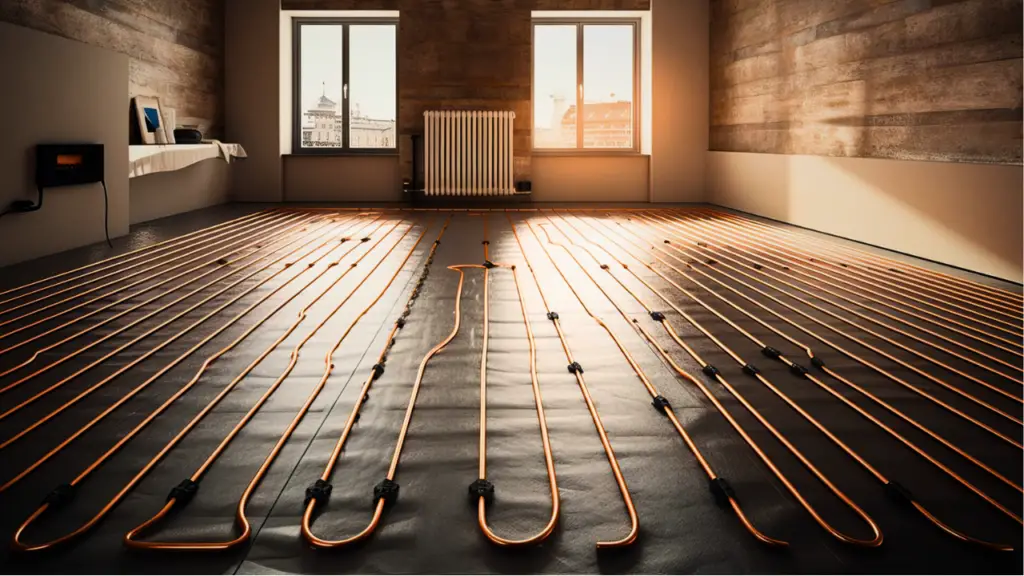Radiant floor heating has emerged as a revolutionary choice for homeowners seeking efficiency and unparalleled comfort.
Unlike traditional heating systems, it operates silently and seamlessly, offering a uniform warmth that envelops the living space without the drawbacks of vents or radiators. This guide explores the benefits, types, and installation considerations of radiant floor heating systems.
Advantages of Radiant Floor Heating

Radiant floor heating is celebrated for its ability to provide a consistent level of warmth throughout a room. Unlike forced-air systems that create stratified temperatures, radiant heat warms objects directly, ensuring that the floors and surfaces maintain a comfortable temperature.
This not only enhances comfort but also reduces energy consumption by up to 30% compared to conventional heating methods.
Types of Radiant Floor Heating Systems
1. Hydronic Radiant Floor Heating

Hydronic systems circulate heated water through durable polyethylene tubing installed beneath the floor. This method is highly efficient and ideal for whole-house heating, offering customizable zones to regulate heat distribution across different rooms. The initial installation cost ranges from $6 to $15 per square foot, depending on factors like retrofitting requirements and local pricing variations.
Key Features:
- Multiple Heating Zones: Allows precise control over room temperatures.
- Outdoor Reset Control: Adjusts water flow based on external temperature changes.
- Pex Tubing: Corrosion-resistant tubing that ensures longevity and minimizes leakage risks.
2. Electric Radiant Floor Heating

Electric systems utilize heating cables or mats installed directly beneath the floor surface. Although more affordable to install in individual rooms like bathrooms or kitchens, electric systems are less cost-effective for entire homes due to higher operational costs (6 to 10 watts per square foot). Nevertheless, they offer simplicity in installation and are effective for spot heating purposes.
Installation and Practical Considerations
Radiant floor heating systems can be integrated into various flooring types, including hardwood and tile, with careful consideration given to carpeting due to its insulative properties. Installation methods range from embedding tubes in concrete to retrofitting existing floors with electric mats, each requiring specific expertise and planning.
Historical Evolution and Reliability
Historically, radiant heat has roots dating back to ancient Rome, where it was used to warm rooms using subfloor flues. Modern advancements, such as the use of PEX tubing, have significantly enhanced reliability and affordability, making radiant floor heating a viable option for contemporary homes.
Conclusion
Radiant floor heating represents a compelling blend of efficiency, comfort, and aesthetic appeal in modern housing solutions. Whether opting for hydronic or electric systems, homeowners can expect a superior heating experience that aligns with both their environmental concerns and desire for enhanced living quality.

By choosing radiant floor heating, households not only reduce energy costs but also embrace a quieter, more evenly distributed warmth that traditional heating systems struggle to match. As technology advances and installation methods become more refined, radiant floor heating continues to shine as a beacon of innovation in home comfort.



